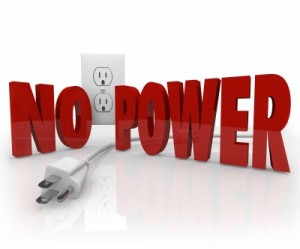 Hypotension or low blood pressure is caused by loss of vascular tone / tension and usually results from one or more of the following conditions. See our Hypotension Model Cause for more Information
Hypotension or low blood pressure is caused by loss of vascular tone / tension and usually results from one or more of the following conditions. See our Hypotension Model Cause for more Information
- Insufficient oxygen to arterial smooth muscle to maintain tone
- Dysfunction of brain area that controls Blood Pressure
- Inhibition of vagus nerve
- Toxic Shock where one or more toxins disrupt tissue oxygen delivery
- Traumatic Shock where one or more events disable metabolism
- Acute dehydration which results in blood volume loss or excess salts which prevent oxygen solubility and oxygen delivery
- Severe blood loss
The body uses two mechanical processes to control blood pressure:
- Heart Rate and Force to force blood to move blood;
- Vascular tone to direct blood where needed through vascular system.
Hypotension from a weak heart is rare because usually diagnosed as heart disease. Low blood pressure usually results from failure in vascular tone maintenance.
 Deficient oxygen delivery to parts of the brain can occur without clinical “hypotension”.
Deficient oxygen delivery to parts of the brain can occur without clinical “hypotension”.
Stress and Flow
Arterial smooth muscle tension limits blood flow, and preserves pressure. Squeezing arteries directs blood where needed by restricting flow to areas where it is not needed.
Weak arterial tone inhibits the body’s ability to regulate blood flow. Likewise, systemic hypoxia, that triggers an entire-body vasodilator reflex, can also result in hypotension.
Breakdown in the vascular tone is the dominant underlying cause of low blood pressure. Loss of vascular tone causes limits blood and oxygen delivery to high demand areas in the body.
Flow-control failure causes poorly supplied tissues under-perform, exhibit functional weakness produce excess lactic acid. This transient under-performance results in a wide range of syndromes and symptoms ranging from benign to severe and degeneration.
Hypotension is both a cause and an effect of vascular tone loss. When tissues that control oxygen delivery do not get enough oxygen. This is positive feedback.
It evidences a durable and recurring pattern which limits stress adaptive responses.
Physiology Models
Hypotension is weakly defined in most medical literature. It generally reflects the inability of the body to regulate blood flow due to an absence of vascular tone. Cardiac insufficiency is outside this description.
| Lack of oxygen to Brain Controls | |
 Damage or trauma to the back of the head can establish conditions which inhibit signal generation that prevents proper blood flow.Hypoxic trauma establishes durable blood flow reduction because of capillary swelling at the root of the vagus nerve.See von Ardenne.Inhibited blood flow prevents normal regulation of sympathetic nervous system, including blood pressure. Leads to sympathetic/parasympathetic imbalances. Damage or trauma to the back of the head can establish conditions which inhibit signal generation that prevents proper blood flow.Hypoxic trauma establishes durable blood flow reduction because of capillary swelling at the root of the vagus nerve.See von Ardenne.Inhibited blood flow prevents normal regulation of sympathetic nervous system, including blood pressure. Leads to sympathetic/parasympathetic imbalances. |
|
| Autonomic Nervous System Imbalance | |
 See Vasovagal Syncope. Trauma or stress that that exceeds the current adaptive range of the autonomic nervous system causes an imbalance where either the sympathetic or parasympathetic branch of the autonomic nervous system dominates.Sympathetic dominance produces hypertension, high blood pressure, while parasympathetic produces hypotension, low blood pressure.Chronic stress tends to create a durable and usually recurrent pattern of sympathetic or parasympathetic dominance.Episode recurrence reflects the normally progressive depletion metabolic agents which enable balance.Principle agents which support autonomic balance: See Vasovagal Syncope. Trauma or stress that that exceeds the current adaptive range of the autonomic nervous system causes an imbalance where either the sympathetic or parasympathetic branch of the autonomic nervous system dominates.Sympathetic dominance produces hypertension, high blood pressure, while parasympathetic produces hypotension, low blood pressure.Chronic stress tends to create a durable and usually recurrent pattern of sympathetic or parasympathetic dominance.Episode recurrence reflects the normally progressive depletion metabolic agents which enable balance.Principle agents which support autonomic balance:
Agents which inhibit autonomic balance:
|
|
| Lack of oxygen to artery smooth muscles | |
 Secondary hypoxia is a medically unrecognized condition. While vascularized tissue receives oxygen from capillary networks, non-vascularized tissue is supported by solubility and diffusion processes in blood plasma.Secondary hypoxia occurs when nutrient and oxygen delivery from plasma fails to meet the demands from non-vascularized tissue. Smooth muscle cells in arteries are non-vascular and receive oxygen from plasma.When plasma oxygen concentration decreases below the vascular tone threshold, the smooth muscles cannot squeeze, resulting in hypotension. Vascular dilation of a known effect of hypoxia except in the lungs, which respond with vasoconstriction, which further limits oxygen absorption. |
|
| Shock Cascade | |
Hypoxic Degeneration
Loss of oxygen to non-vascularized tissue enables degeneration.Degeneration non-vascular tissue normally indicates durable decrease in secondary oxygen delivery. oxygen and likely nutrients to the degenerate tissue.
Degeneration of non vascular tissue at soluble oxygen transport is degenerate to. This is a typical cause of many sorts of degeneration:
- Decreasing Vision (lens of eye)
- Vascular (arteriosclerosis)
- Connective tissue (cartilage, ligaments & tendons)
